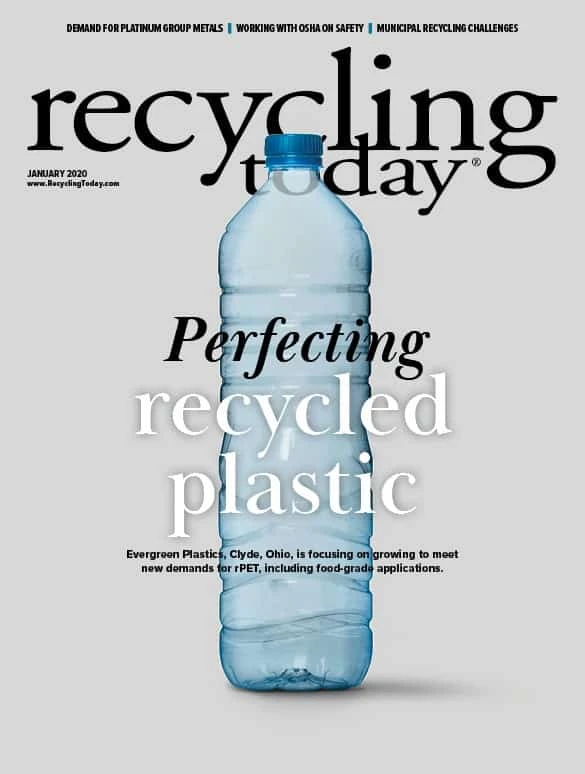Ann Arbor, Michigan, moves to reopen MRF
Despite city staff’s recommendation to approve a $112 million contract with Emterra Environmental USA, Flint, Michigan, to haul Ann Arbor’s recyclables to Emterra’s new single-stream material recovery facility (MRF) in Lansing, Michigan, the Ann Arbor City Council voted in favor of working with area nonprofit Recycle Ann Arbor (RAA) to rebuild and reopen the city’s MRF.
Emterra Environmental is the U.S. division of Canadian waste management firm Emterra Group, which has 45 years of experience in collecting, processing and marketing recyclables and owns and operates 14 MRFs that process 550 million tons of materials annually.
The proposal to transport recyclables to Lansing would result in 2.5 truckloads daily for a total of approximately 91,000 vehicle miles traveled annually, working against the city’s Carbon Neutrality by 2030 goal, city council says.
In July 2016 the city says it closed its MRF, formerly operated by Charlotte, North Carolina-based ReCommunity, which was acquired by Republic Services in late 2017, because of safety concerns about the equipment. Since 2017, the city has contracted with RAA to haul recyclables to Ohio-based Rumpke’s MRF in Cincinnati for processing. That contract expires June 30.
Ann Arbor issued a request for proposal to haul recyclables to another MRF or to “equip and modify the city’s MRF to receive, process and market all recyclable materials.”
“There has been a serious shortage of material recovery facility capacity in southeast Michigan and this has in part led to Michigan’s underperformance in material recovery,” says Kerrin O’Brien, president of the Michigan Recycling Coalition, Lansing.
RAA offered the only bid to restart the Ann Arbor MRF, the city says.
“Rebuilding the MRF would restore a $6 million publicly owned community asset with no upfront capital cost to the city,” the city reports. It also would create approximately 20 local jobs.
Despite staff concerns that RAA lacks the experience and qualifications to operate the MRF, city council directed them to negotiate an initial 10-year agreement with RAA.
Takeaways from EPA’s recycling framework report
The U.S. Environmental Protection Agency (EPA) has released its “National Framework for Advancing the U.S. Recycling System.” The report is the product of a collaborative effort that began on America Recycles Day 2018.
During America Recycles Day 2018, the EPA hosted its first America Recycles Day Summit, bringing together stakeholders from across the U.S. recycling sector to sign the America Recycles Pledge to work together in 2019 to identify actions to address the challenges and opportunities facing the U.S. recycling system.
The “2019 National Framework for Advancing the U.S. Recycling System” highlights some of the actions stakeholders have taken and establishes goals for 2020. The report looks at recycling education, recycling infrastructure, secondary materials markets and measurement.
According to the EPA’s report, it can be difficult for consumers to understand what materials can be recycled and how and where to do so.
The EPA’s report indicates the need to develop clear, consistent messages about materials management that enable consumers to recognize the value of reusing, recovering and recycling materials and the value of buying products with recycled content.
The report set goals for 2020 to develop and distribute common recycling messages on national issues.
According to the report, America’s existing recycling infrastructure has not kept pace with the changing materials stream. Contamination can cause equipment failures and halt production. A more holistic, modern and adaptable national recycling infrastructure that embraces innovation and is resilient to changes in material streams, markets and consumer expectations could help to address this.
In 2020, goals include conducting and compiling research on successful infrastructure investments and potential investment opportunities.
Recent policy changes, including scrap import restrictions in China and other Southeast Asian nations, have accelerated the need to improve domestic markets for recyclables, the EPA notes.
The report sets goals to continue to promote government programs to purchase recycled materials and to identify and work with companies designing packaging and products to encourage recycled content use and recyclability.
Various definitions and recycling rate methodologies exist across the U.S., creating challenges when setting goals and tracking progress. In 2020, the EPA says it seeks to establish standardized recycling metrics supported by consistent terminology and methodology.
The full report is available at www.epa.gov/sites/production/files/2019-11/documents/national_framework.pdf.

Explore the January 2020 Issue
Check out more from this issue and find your next story to read.
Latest from Recycling Today
- Aqua Metals secures $1.5M loan, reports operational strides
- AF&PA urges veto of NY bill
- Aluminum Association includes recycling among 2025 policy priorities
- AISI applauds waterways spending bill
- Lux Research questions hydrogen’s transportation role
- Sonoco selling thermoformed, flexible packaging business to Toppan for $1.8B
- ReMA offers Superfund informational reports
- Hyster-Yale commits to US production





